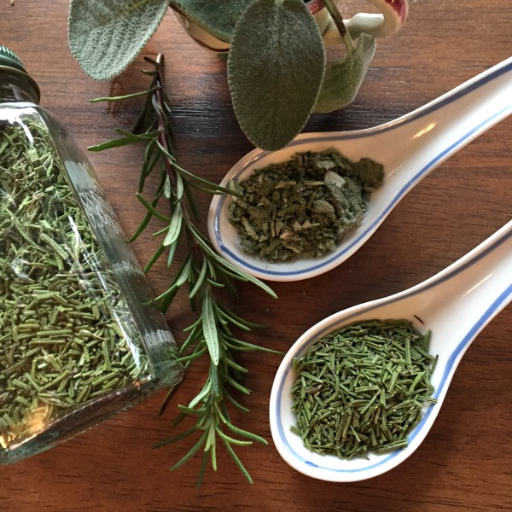Have you ever had too many fresh herbs and wondered what to do with them? Microwave-drying herbs is an easy and effective way to keep them suitable for future use so you can still enjoy their scent and taste even after the growing season. Traditional drying methods consume a lot of time, and besides requiring spacious facilities, using a microwave oven provides a fast and dependable alternative. In this article, we will discuss the step-by-step procedure of drying fresh herbs in the microwave, ensuring that they retain their essential oils and attractive flavors. Whether you are a well-experienced farmer or just a person who likes to cook with natural ingredients, this ultimate guide has all the information that can assist you in successfully drying your herbs and enhancing your kitchen art.
How Can You Use a Microwave to Dry Fresh Herbs?
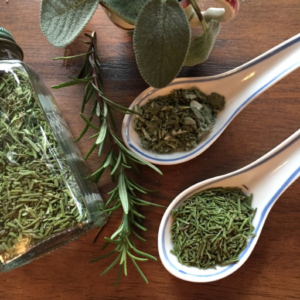
Image source: https://www.mashupmom.com/
You can use a microwave for just several minutes to dry fresh herbs. Start by diligently washing your herbs and drying them using a paper towel to remove any moisture found on their surfaces. After that, spread the herbs out in one layer on a microwave-safe plate so they do not touch each other. Cover the herbs with another sheet of kitchen paper or a microwave-safe dish cover to prevent them from scattering during drying. Check after every thirty seconds if herbs begin to burn by microwaving one to two times high heat for 1-2 minutes. Let the leaves become thoroughly dry and crunchy before putting them into an air-tight container. It is time-saving because it helps maintain fresh herb’s essential oils and flavors intact, thus being ideal for culinary purposes.
What Is the Best Way to Dry Fresh Herbs in a Microwave?
The most recommended processes for drying herbs freshly harvested in the microwave involve several vital steps to achieve optimum results. First, thoroughly wash and dry your herb leaves to remove dirt or excessive moisture. Place clean herb leaves on a plate that is safe to use in a microwave oven; ensure they do not overlap one another. Cover the herbs with a microwave-safe lid or another paper towel to keep them in place. Microwave on high for 1-2 minutes, stopping every 30 seconds to check their dryness and avoid burning. Continue microwaving them for 30 seconds until they become dry, brittle, and crispy enough to break them between your fingers. Once dried thoroughly, let the herbs cool, then store them in an air-tight container far from direct sunlight. This approach properly conserves essential oils and flavors, giving you quality dried herbs that are good for cooking.
Which Microwave Settings Are Ideal for Drying Herbs?
The best microwave settings for drying herbs should be high power settings, typically around 1000 watts, to dry them fast and effectively. Initially, put the herbs in a microwave on high for 1 minute; then, keep doing it every 30 seconds while checking whether they are dry. The time can range between 1 and 3 minutes depending on the plant species and their initial moisture content. Consequently, if you don’t watch out, your herbs may burn up; thus, keeping an eye on them throughout the process is essential. Allow them to cool completely before storing as well because this effectively preserves their essential oils and taste so you can store dried ones longer.
How Long Does It Take to Dry Herbs in the Microwave?
Typically, drying herbs in the microwave takes between 1 to 3 minutes, depending on the kind of herb and its moisture content. Start by microwaving the herbs on high for a minute, then continue every half-minute intervals, and check how dry they are each time. Be cautious not to over-dry or burn them, and ensure that they cool completely before placing them in a container with an airtight seal. This is fast and efficient as it retains essential oils and flavors well.
Which Herbs Are Best Suited for Microwave Drying?
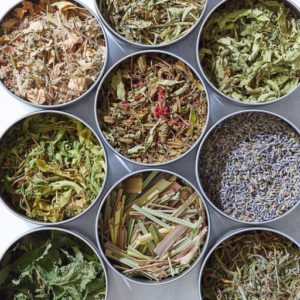
Microwave drying works best with low moisture-content herbs like thyme, rosemary, oregano, sage, and marjoram. These herbs can be dried quickly while preserving their essential oils and flavors if exposed to short bursts of intense heat from microwave radiation. Nevertheless, fragile plants such as basil, mint, or parsley could still be dried in the microwave, though one must be careful to avoid burning them through close monitoring. Excellent results are achieved through even spacing of herbs and checking at regular intervals for dryness when microwaving drying is used.
Can You Dry Herbs Like Parsley and Basil in a Microwave?
Of course, drying herbs such as parsley and basil in a microwave is possible. To achieve the best results, the herbs should be placed between two paper towels and then microwaved at high temperature for 15-30 seconds at a time, with regular checks to avoid burning. Among these delicate herbs, some need more attention than others. You should allow the leaves to cool completely before storing them in an air-tight container to retain their taste and essential oils.
What About Hardier Herbs Like Rosemary and Thyme?
Rosemary and thyme are hardier herbs that can be dried quickly because of their relatively low moisture content and cellular solid structure. To dry them, place them between two towels or paper tissues and microwave on High Power for about one or two minutes while checking every thirty seconds so as not to over-dry or burn them. These herbs hold up exceptionally well when dried quickly using extended bursts of hot microwave heat; thus, they retain their flavoring properties even after drying, resulting in an aroma-filled dish. Ensure they cool down entirely beforehand storing in airtight containers if you don’t want their flavors diminished by moisture loss during storage.
Is It Possible to Dry Herbs from the Fridge?
Drying herbs from the fridge is possible. Clean them and ensure no excessive moisture, then towel them off using a paper towel. Put the herbs between two pieces of paper towel, then microwave them on high for short bursts as if fresh. Rosemary, thyme, parsley, and basil are herbs found to dry well when kept in the refrigerator, retaining their essential oil and taste properties. Allow them to cool completely before storing them in an airtight container.
What Are the Steps to Microwave Dry Herbs Successfully?

- Purify the Herbs: Rinse the herbs under cool water to remove soil or fragments. Dry them completely using paper towels.
- Organize on Paper Towels: Place herbs between two paper towels to dry evenly.
- Microwave in Intervals: To avoid over-drying or burning, microwave on high for 1-2 minutes and check every 30 seconds.
- Cool Completely: Let the herbs cool on the paper towels until they reach room temperature.
- Store Properly: Once dried herbs have cooled entirely, store them in an airtight container to keep their flavor and essential oils intact.
How Do You Wash the Herbs Before Drying?
Here are some simple steps you can follow to wash your herbs before drying them:
- Rinse Thoroughly: Hold the herb bunch under cold running water while shaking it gently to remove any dirt, dust, or insects that may be hiding within its leaves.
- Soak in Water (Optional): If you notice stubborn debris sticking onto your herb bunches, put them into a bowl filled with clean and cool water. Swirl around gently, then let them sit for about one minute before lifting out again.
- Dry Thoroughly: Shake off any excess water from washed herb bunches, then lay them flat on a clean kitchen towel or several layers of paper towels. Pat gently using another piece of cloth until there is no visible moisture left. Drying time should not exceed two hours since prolonged wetness leads to mold growth, which ruins quality during storage.
Quality and taste will be maintained if you ensure your herbs are cleaned well and dried correctly before starting this process.
Should You Dry with Paper Towels or a Kitchen Towel?
If you’re unsure whether to use paper towels or a kitchen towel when drying your herbs, it can help weigh up each method’s advantages and disadvantages. Paper towels are disposable, so there’s less chance of cross-contamination; however, they sometimes leave slight fibers on the herbs. They also create more waste – this may concern environmentally conscious people. On the other hand, kitchen towels are reusable, saving money over time and reducing landfills; plus, they tend not to leave any residue on the herbs. That said, they must be clean and dry to avoid introducing unwanted bacteria or moisture. Ultimately, it comes down to convenience versus sustainability: which is more important for you?
Why Use a Microwave Safe Plate?
Using a microwave-safe plate is essential for your safety and cooking properly. Plates that aren’t microwavable can soak up microwave radiation and get very hot – this could burn someone or even cause the plate to break. Not only this, but such plates might also release dangerous chemicals into your food, especially if they’re made with certain plastics or have metal decorations. A microwave-safe dish won’t degrade when exposed to microwaves, meaning all parts of your meal heat through evenly while staying safe for consumption throughout the reheating process! So always use the proper dishware so that nothing can ruin what should be good eats by accidental exposure to metal plastics.
Do You Need to Cover the Herbs?
Covering herbs during drying is unnecessary, but it can be helpful. Using a paper towel or microwave-safe cover, this method keeps moisture sealed in and protects against dirt and other pollutants. It also assists with absorbing too much moisture so that the herb doesn’t become moist throughout while still ensuring it dries evenly. However, care should be taken not to use covers that don’t allow enough air circulation, which may lead to mold growth. All in all, this step keeps them clean and helps them dry better.
How Do You Ensure the Herbs Are Completely Dried?
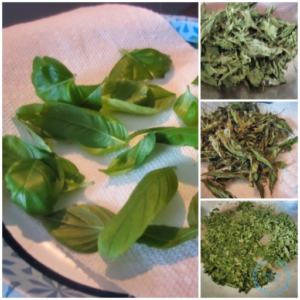
To ensure herbs are dried thoroughly, look for brittleness and crispy texture. If they break apart easily when squeezed between fingers or if their stems snap upon bending, they have been adequately dried out. Also, you can try this: put some of the already dry leaves into an airtight container overnight; should any water droplets form inside the jar the following day on its walls, your samples need more time under sun heat or artificial warmth, like from a dehydrator/oven set at low temperature.
How Can You Tell When the Herbs Are Dried?
To determine when the herbs are dry, examine their texture and appearance. Herbs have been dried correctly and feel brittle and disintegrate readily between your fingers. The leaves should be light and thin, while the stems must snap rather than bend. Furthermore, you can use a “jar test” by putting a small amount of the dried herb into sealed glass jars for one day; if there are no water droplets on the inside, then it means that they are well dried out. The color of the herbs should remain lively, as this shows that most of their essential oils and flavorings have been preserved.
Should You Microwave on High or Low?
When microwaving herbs, it is preferable to select a low-heat setting. High-powered microwave ovens tend to burn or strip off essential oils from plants, leaving them tasteless and weak in strength. However, putting it at a lower level will gently eliminate moisture without affecting its quality. This also helps retain bright colors and fragrances. To ensure all-round drying, microwave in short bursts and check often so as not to overheat.
What If Your Herbs Are Not Completely Dried?
If your herbs are not completely dried, they might grow mold or lose their strength as time goes on. To fix this issue, a few methods can be used to continue the drying process. For example, you may spread the herbs in a single layer in a well-ventilated area and occasionally turn them until they air dry. Alternatively, you could use a dehydrator to finish drying the herbs; it should be set at a low temperature. If these options are unavailable, an oven can be used by placing the herbs inside with the door slightly opened so that moisture can escape (the lowest setting is recommended). It is essential to check the herbs often while drying so they do not become too dry.
How to Store Dried Herbs After Microwave Drying?
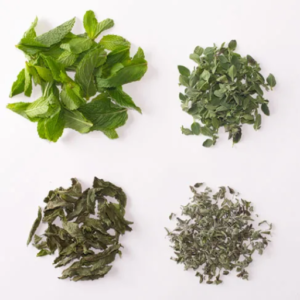
Store your dried herbs after microwave drying in containers that seal tightly because this will keep up their flavor and potency. The best choice would be glass jars with perfectly fitting lids; such containers protect against moisture and air from contacting stored plant materials. To avoid breaking down quality due to environmental factors like light or heat exposure, which degrade the qualities of dried plants, put them in cool, dark places such as cupboards or pantries where there isn’t much light coming through windows all day. Also remember that labeling each container with name of herb plus date when it was dried will help one know how fresh his/her stock is always kept under right conditions.. Dried properly preserved flavor and aroma can stay unchanged for even twelve months.
Is It Better to Use a Jar or an Airtight Container?
Either airtight jars or containers can be used to store dried herbs, but they each have their own benefits. A suitable container for storage is glass because it doesn’t react with anything, doesn’t take on smells, and lets you see what’s inside. It has to have a tight lid, so there’s no air exchange at all. Another choice would be plastic or metal ones, which also work well if they are completely sealed against the entry of air, block light by being opaque, and save space by being able to stack easily or compactly store many together. Ultimately, it may be chosen based on personal preferences about visibility or convenience of use while storing; however, always ensure that some environment where nothing can get in/out remains around the plant’s parts since this ensures their highest potency and taste.
Should You Let the Herbs Cool Before Storing?
Yes, you should let them cool down before putting away any herb material for safekeeping afterward. When drying herbs down until they will not lose further moisture, it’s necessary to let them cool off naturally, too. Otherwise, they may still sweat out some water over time when enclosed within the packaging, even if seemingly dry already entirely. Dryness should, therefore, never be taken as an indication that cooling isn’t needed anymore before storage since doing this protects against mold formation due to excessive dampness gathering back again into such tightly shut places later on after sealing herbs up ultimately. This way, everything stays fresh longer.
What Are the Best Places to Store Dried Herbs?
The most incredible places to store dried herbs are in cool, dark places. A pantry or cupboard far from any household heat sources like ovens and stoves is ideal. They can lose their color, flavor, and potency if exposed to direct sunlight, so they must be kept in opaque containers or somewhere with very little light exposure. Also, a low humidity level that stays the same throughout prevents mold and degradation. To keep your dried herbs fresh and aromatic for up to a year, do not put them near windows or refrigerators where temperature changes may occur.
What Are the Benefits of Using the Microwave to Dry Herbs?
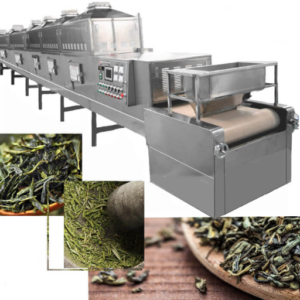
Using a microwave for drying herbs has many advantages, mainly based on quickness and efficiency. It dries the herbs much faster than other traditional methods, so they can be prepared for storage within minutes. This also preserves more of their color, flavor, and nutritional value since rapid drying helps preserve essential oils. Additionally, this method is convenient for small quantities as it requires little equipment and effort. The risk of mold or spoiling is low because moisture does not have time to accumulate before the herbs are dried completely using microwaves.
How Does Microwave Drying Preserve Flavour?
To keep the flavor intact, herbs are dried in a microwave. It eliminates moisture content very fast from these plants, thereby retaining their essential oils. The essential oils of any herb are responsible for giving it its unique smell and taste; sometimes, this may slowly evaporate during drying using traditional methods, hence making such a herb lose its taste. Such losses can be avoided through quick microwave drying, which maintains the plant’s strength and keeps concentrated flavors locked into it. This method also takes a short time, thus preventing degradation so much so that both vibrant colorfulnesses and nutrition values are maintained within them.
Is It Cost-Effective Compared to Using a Dehydrator?
Comparatively speaking, using a microwave to dry herbs is cheaper than dehydrators. Many households have microwaves, so additional expenses will not be incurred if you already have one at home. On the other hand, purchasing an electric food dryer requires an initial capital outlay, which varies with models and features available in different brands. Furthermore, electricity consumed by microwaves during brief periods of operation is lower than what dehydrators would need over extended working hours; hence, power bills are more affordable. Nevertheless, whereas small quantities occasionally fit well with microwaves, large-scale frequent drying calls for higher-capacity machines like electric food dryers since they are designed to handle such amounts better over time.
What Are the Potential Downsides of Drying Herbs in a Microwave?
Although it is convenient to use a microwave for drying herbs, there can be some disadvantages associated with this method. One major problem is uneven drying, which leaves some parts of the plant wet and prone to rot due to mold growing there. Moreover, if not overseen, high temperatures produced by microwaves may make herbs burn or too fragile, thus destroying both their taste and texture. Another issue concerns the ability of microwaves to remove all possible contaminants, which might be especially significant when people dry medicinal plants. Finally, fast microwaving can only deal with small amounts at once, making it impractical for those who have large quantities of these products harvested and need them dried in this way.
Frequently Asked Questions (FAQs)
Q: Which herbs can be dried in the microwave?
A: Many common herbs, such as oregano, sage, cilantro, and tarragon, can be dried in the microwave. These garden herbs retain their flavor and color well when dried in the microwave.
Q: How do I prepare my herbs to dry in the microwave?
A: Make sure to wash and thoroughly pat dry your herbs with either paper towels or a clean kitchen towel. Ensure there are no fragments of metal in the herbs to prevent sparks in the microwave.
Q: What equipment do I need to dry herbs in my microwave?
A: You will need a microwave-safe plate, layers of paper towels or a clean kitchen towel, and possibly parchment paper to prevent the herbs from sticking. A pestle or a coffee grinder can be used to crush dried herbs.
Q: How should I arrange the herbs in the microwave?
A: Place the herbs in a single layer on the microwave-safe plate, ensuring they do not overlap. This helps the herbs to dry evenly and quickly.
Q: How long should I microwave the herbs?
A: Microwave the herbs at full power in 20-second bursts, checking frequently until completely dry. The total time depends on the type and quantity of herbs, but a few batches of 20 seconds will usually be sufficient.
Q: What is the best way to store microwave-dried herbs?
A: Once dried, store the herbs in an airtight container in a cool, dark place. This helps to maintain their flavor and freshness for a more extended period.
Q: Can I dry leftover fresh herbs in the microwave?
A: Yes, using leftover fresh herbs you buy from the store or pick from your garden is a great way to preserve them. Drying them in the microwave can be done quickly, preventing waste.
Q: Do microwave-dried herbs retain their flavor?
A: Generally, herbs dried in the microwave retain flavor and color quite nicely. However, more delicate herbs may lose potency compared to drying methods like air drying.
Q: Is drying herbs in the microwave safe?
A: Yes, drying herbs in the microwave is safe as long as you avoid any fragments of metal and use microwave-safe materials. Continuously monitor the herbs to prevent them from burning.
Q: Can I dehydrate a large batch of herbs in the microwave?
A: It’s best to dry herbs in small batches to ensure even drying. Overloading the microwave can cause uneven drying and potentially burn some herbs while leaving others moist.













